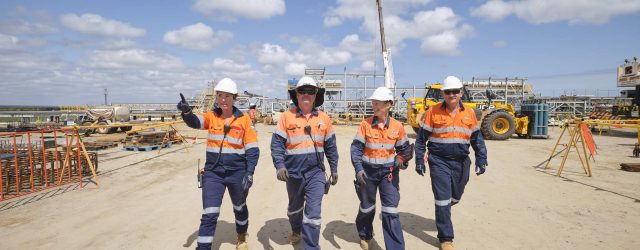Construction ripe for productivity picking at Jobs Summit
Posted: 15th July 2022
Posted in: Blog

Posted: 15th July 2022
Posted in: Blog
The Federal Government’s recently announced Jobs and Skills Summit in September is aimed at addressing current economic issues such as skills shortages by driving reforms in areas like employment participation, productivity and skilled migration.
The Summit could not come at a more important time with all industries suffering significant skills shortages. In construction alone, Infrastructure Australia last year estimated that the sector was facing a shortfall of 105,000 workers and this was before the major flooding events on the East Coast caused significant damage to infrastructure and increased demand for workers even further.
Whilst skilled migration, training and increased employment participation can all help address this problem, none of them are a silver bullet.
Australia’s reputation as a desirable destination for skilled migrants has taken a battering by floods, bushfires, Covid lockdowns and high cost of living. No amount of tinkering with the visa system will counter these issues in the face of increasing worldwide competition for workers. Consideration will have to be given for positive financial inducements to attract people to Australia, like the Living Away from Home allowance and clearer pathways to permanent residency and citizenship.
Training can help with skills shortages in some industries but it is a medium to long term solution that, in a high employment environment, risks simply transferring the problem from one industry to another as workers upskill from lower skilled industries to higher skilled ones.
Given the current high levels of employment it is important that a focus is placed on enabling and incentivising greater workforce participation by those currently underrepresented in the workforce such as women and older workers. As an example, the Construction Industry Culture Taskforce is aiming to improve the culture of the industry through the development of a ground breaking Culture Standard to improve female representation in the sector from the current low base of 12 per cent.
The only silver bullet for skills shortages in the short term is a significant improvement in productivity. We need to find ways to do more with the resources we already have. This applies to both white and blue collar activities and arguably the bigger opportunities lie in improving how we procure, manage and govern things.
This is certainly true of construction industry. In fact, the construction industry presents one of the greatest opportunities to improve Australia’s overall productivity performance. In a recent report commissioned by the Australian Constructors Association, BIS Oxford economics identified that just halving the productivity gap between construction and other major industries would result in savings of $15 billion annually.
Industries like manufacturing and agriculture have recognised the opportunities presented by greater government and industry collaboration and adoption of technology and these industries are outperforming construction. In fact, construction only ranks above hunting in the McKinsey Global Institute Digitisation Index that measures how well industries have adopted digital technologies.
This is especially concerning as governments nationwide have committed record investment in the construction of new infrastructure—a strategy that has seen the industry take on the critical role of rebuilding Australia’s economy. It is Australia’s third largest industry, employing 1 in 10 of the working population, and contributing to 8 per cent of GDP.
Whilst the construction industry is challenged it represents a huge opportunity with so much low hanging productivity fruit it would take years before a ladder was needed to do any picking.
The Jobs and Skills Summit is a great place to start the process to realise the enormous productivity opportunity that is currently hiding in plain sight. But ultimately it will require a planned, coordinated and sustained effort by all levels of government, industry and unions to bring in the harvest.